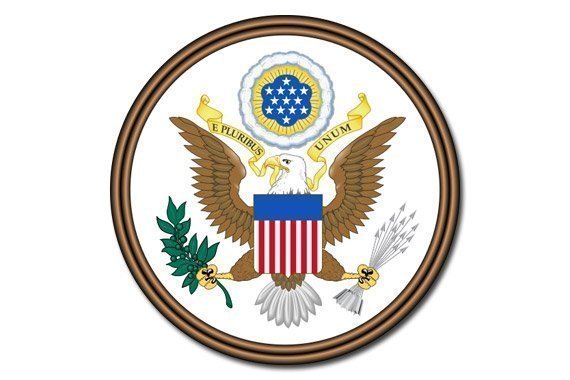
Why it is called “The Cabinet” and what famous people have been in it.
Read the current chapter online: “The Cabinet”
Suggestions
- We’ll have to forgive the children’s uncle for his rather low (and outdated) view of the nature of girls…. Meanwhile, when the book was published in 1894, why would it have been unusual to see girls riding around on bicycles?
- View present day Dupont Circle.
- Learn more about the Massachusetts Avenue historic district.
- Learn more about the linden tree.
- Make a list of the characteristics of the Cabinet as described on pg. 52.
- While it is true that the Cabinet is not mentioned by name in the Constitution, it is referenced in Article 2, Section 2.
- Visit the Cabinet Room at the White House.
- We tend to think the “opposition newspapers” are a new thing, when actually they have been around since George Washington!
- What does the term “the fourth estate” refer to and why?
- Narrate the history of the Cabinet as explained on pg. 54.
- Learn about Henry Clay and William Seward.
- Make a list of the current Cabinet positions (scroll down).
- Make another list of the Cabinet positions mentioned on pg. 57. Compare and contrast the differences.
- How does the author explain the Senate’s advise-and-consent role when it comes to the President’s Cabinet choices (last para pg. 57)?
- Review the Louisiana Purchase.
- Learn more about the Mexican-American War.
- Learn more about the Emancipation Proclamation.
- How could the “selfishness of a Caesar and the will of a Napoleon” wreck nations?
- Learn about Edwin Stanton and William Evarts.
- Make a list of the men who made up President Washington’s Cabinet and their chief contribution.
- Learn more about the history of political parties.
- Compare and contrast the political nature of the cabinets of Washington and Jefferson with a view to advantages and disadvantages of each.
- What is a “partizan”?
- Learn about Edward Everett.
- Why do you think Jefferson, Hamilton, Knox, Randolph, Marshall, Gallatin, Madison, Monroe, John Quincy Adams, Wirt, Van Buren, Clay, Webster, Ewing, Everett, Marcy, Crittenden, Cass, Bancroft, Seward, Fessenden, Stanton, Evarts, Sherman, and Blaine are considered names of those who have made Presidents’ Cabinets strong?
- Create a timeline showing the changes to the departments included in the President’s Cabinet.
- Make a chart summarizing the President’s Cabinet. Include the following information:
- A brief description of what that department is responsible for.
- The person who currently heads up that department and his/her title.
- Illustration or photo of that department’s seal (or logo). (See Notebooking pages below for links to images.)
Learn more about the President’s Cabinet from The Book of Knowledge:
The Constitution says nothing about the advisers of the president, now called his cabinet, except that he may consult with the heads of the departments…. At first Congress created only three departments — State, Treasury and War.
The Department of State has charge of our relations with foreign countries; the Department of the Treasury supervises finances, collecting taxes and so on; the Department of War had to do with raising and training the army.
The Department of Justice (its head is called the Attorney General), created later, represents the United States in cases involving the Federal Government. The Federal Bureau of Investigation is a part of this department.
The Navy Department, under the Department of Defense now, was created after Washington’s day, to supervise and maintain a navy….
The Department of the Interior has to do principally with the conservation of natural resources. The Department of Agriculture collects and distributes all kinds of information valuable to farmers.
The next department organized was that of Commerce and Labor; but in 1913 this was divided into separate departments of Commerce and Labor. The Department of Commerce works to encourage trade and commerce at home and abroad…. The Department of Labor looks after the welfare of wage earners.
In 1947 the War (Army) and Navy departments together with the Air Force, were combined in the Department of Defense, with one secretary in the Cabinet.
In 1953 a new department was added, that of Health, Education and Welfare.
“How the United States is Governed” from The Book of Knowledge
Additional Resources
The President’s Cabinet
Very helpful background information at Ben’s Guide.
The Cabinet
Background information and the current Cabinet.
The Development of the Bicycle
Fun aside.
Brief History of the Bicycle
Timeline to help appreciate the improvements.
History of the Parties
Timeline of American political parties.
Activities
All in a Day’s Work
Match the Cabinet positions with their functions.
Units & Lesson Plans
Why Does the President Need a Cabinet?
Open-ended lesson from the Truman Library.
Party On: Political Parties in America
Online and interactive civics lesson targeted to middle-grade students.
Notebooking Pages & Printables
Cabinet Seals
- Department of Agriculture.
- Department of Commerce.
- Department of Defense.
- Department of Education.
- Department of Energy.
- Department of Health and Human Services.
- Department of Homeland Security.
- Department of Housing and Urban Development.
- Department of the Interior.
- Department of Justice.
- Department of Labor.
- Department of State.
- Department of Transportation.
- Department of the Treasury.
- Department of Veterans Affairs.
The Cabinet Notebooking pages
Our free and simple notebooking pages for copywork, narrations, dictations, or wrapping up.
Enjoy the entire series:











You must be logged in to post a comment.